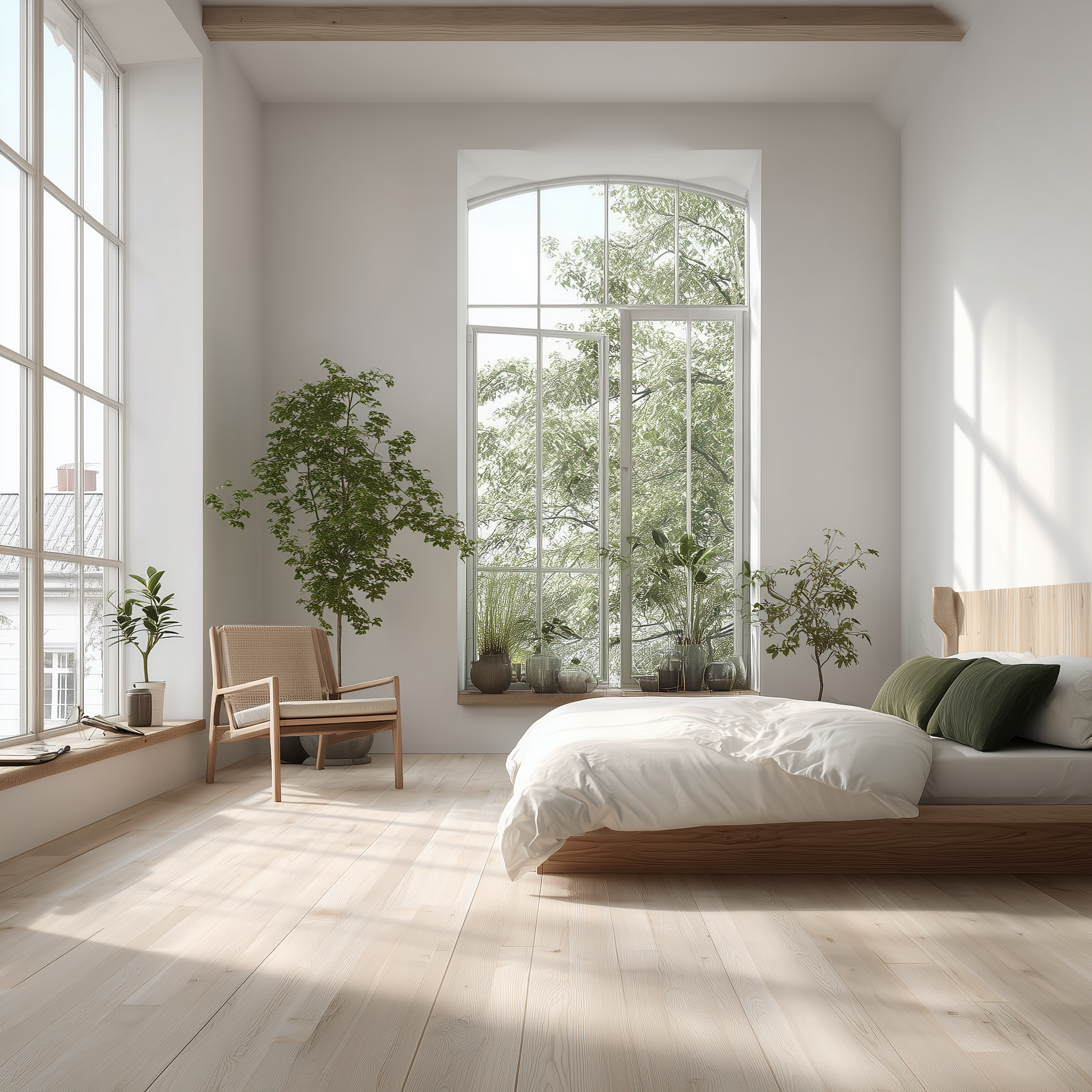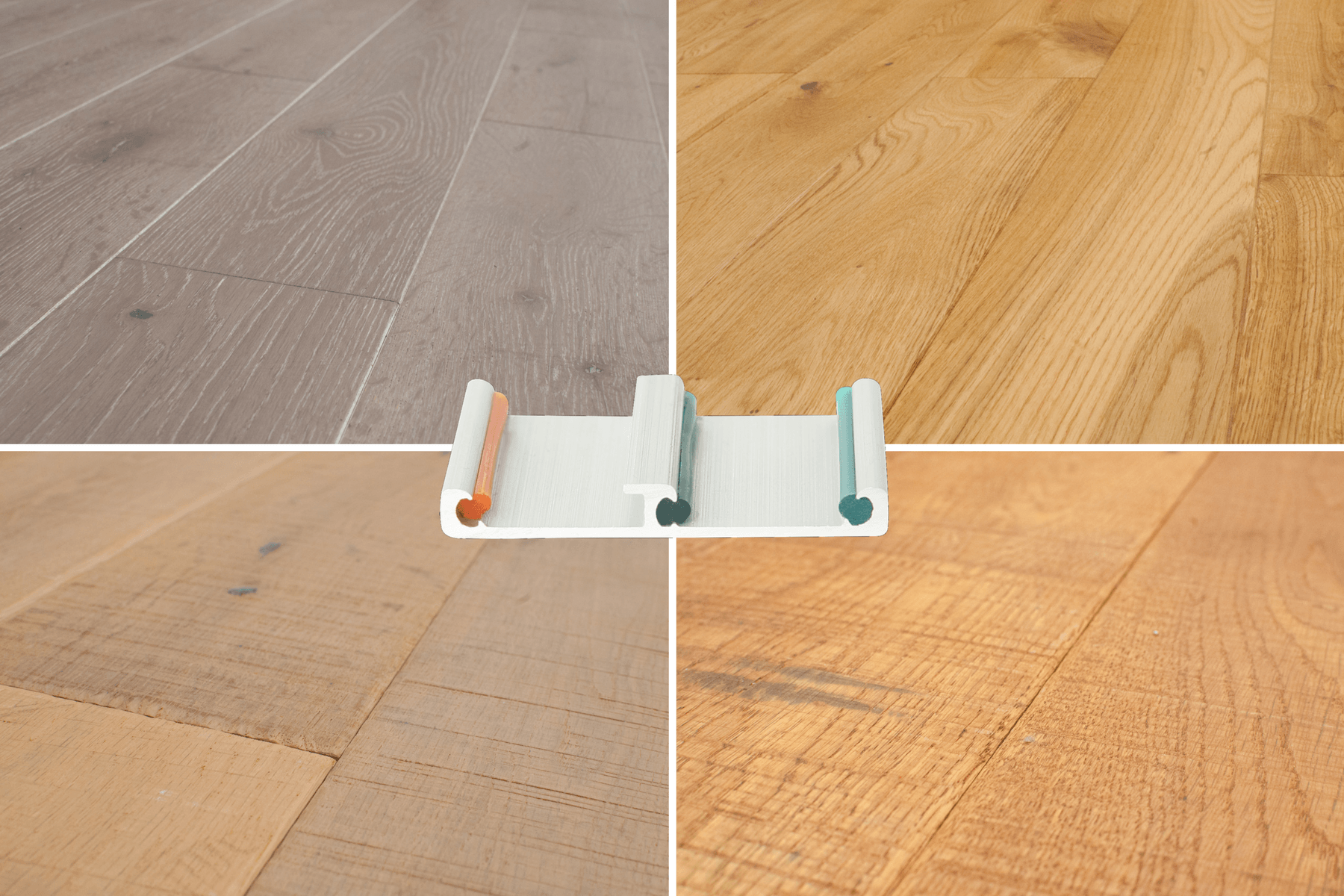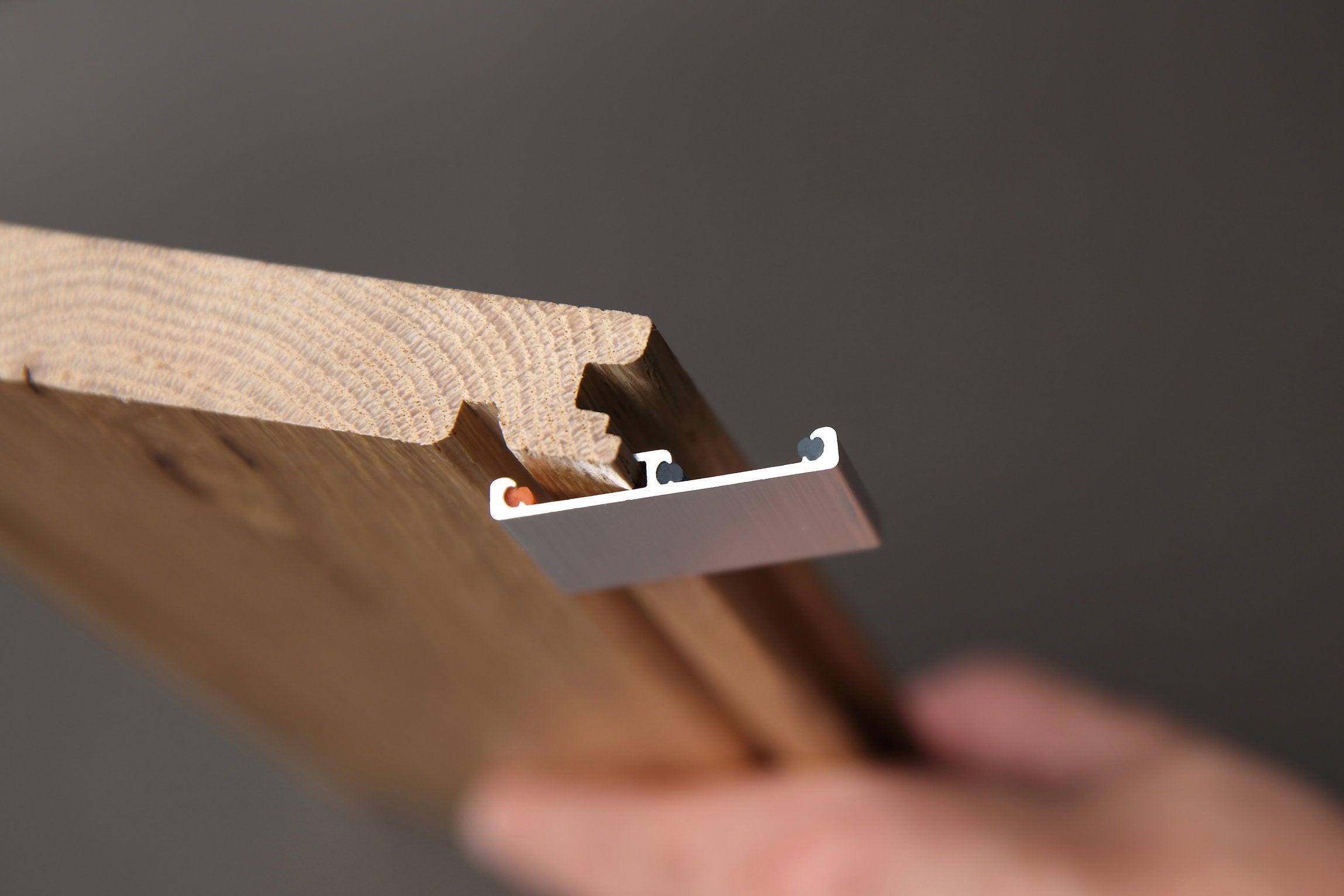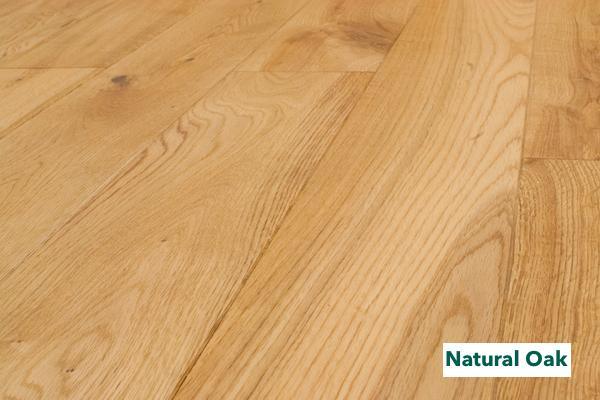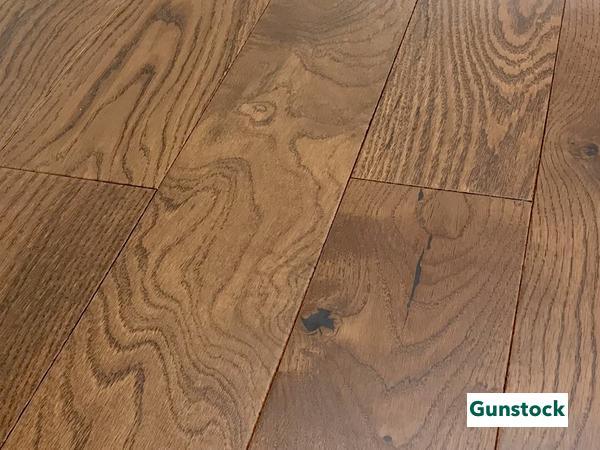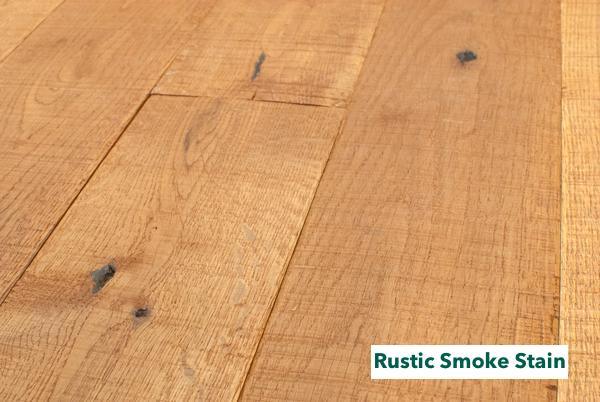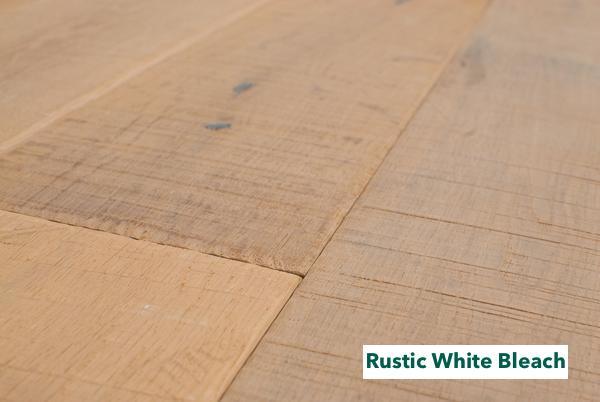Flooring is never just a surface. It is the foundation that sets the tone of a room, carrying light, color, and texture in a way few other elements can. For homeowners and designers alike, the decision between solid hardwood and engineered hardwood is no longer about compromise but about context. Engineered hardwood brings forward the natural warmth of wood, enhanced by a construction that balances beauty with performance. It offers a refined aesthetic, adaptability across spaces, and the reassuring durability of natural material—making it as relevant in a downtown condo as it is in a family home.
What Defines Engineered Hardwood?
Are you aware that engineered hardwood flooring is 100% natural wood? Don’t confuse engineered with laminate flooring. Laminates are cheap reproductions. They use materials like resin or vinyl and imprint it with a photo and grain pattern that imitates the appearance of wood.
Engineered wood floors have a thin wood surface laminated to a more rigid core, usually plywood. The top layer is known as the “wear layer.” It comes in various thicknesses, with a thicker layer lasting longer, but it costs more. The advantage of a thicker layer is it withstands sanding and refinishing like a solid hardwood floor.
The base or core of engineered wood flooring provides its strength and stability. Plywood is the most common material for cores, but some use HDF (High-Density Fiberboard) as an alternative. The more layers in the core, the stronger it is. The higher quality boards have nine layers, making them more resistant to temperature and moisture changes than solid wood.
When shopping for engineered hardwood flooring, you will see the thickness is usually between 3/8 to 3/4 inch thick, whereas solid hardwood planks are 1/2 to 3/4 inch thick. The wear layer can range from 1 mm up to 6mm or about 1/4 inch.
The Anatomy of Strength
Multi-ply is the most common type of engineered wood flooring. The multi-layer design makes it more resistant to issues like expansion and cupping, and the strong plywood cores allow greater stability in wider planks up to 13.5 inches (350mm). The total thickness of multi-ply boards can run from 1/2 to 3/4 in. (13mm to 20mm).
Multi-ply is the best choice when installing under-floor heating or in rooms with many temperatures and humidity variations.
3-ply engineered wood is three separate layers of wood that run in opposite directions through the layers. They are not as resilient as multi-ply but are usually 20% cheaper. A board with a 3-ply core is only reliable at widths of up to 7 3/4 in. (200mm). These engineered wood boards also range from 1/2 to 3/4 in. (13mm to 20mm). Three-ply engineered wood flooring is economical when installing over an existing flat floor for a rental or flip situation.
Engineered wood floors with HDF cores are less common but gaining popularity because of their superior quality. The high-density fiberboard core uses recycled hardwood. The HDR core is more rigid, stable and provides better support and moisture resistance than solid hardwood. Its Janka hardness rating is around 1700. The HDF core in engineered wood flooring solves the dimensional stability issues of traditional solid hardwood flooring.
Engineered vs. Solid Hardwood
Choosing a flooring material is not easy, and it’s a significant investment. To help you consider the various factors, here is a handy guide to help you find the best flooring for your purpose.
|
|
Engineered Hardwood Flooring |
Hardwood Flooring |
|
Cost |
$3 to $14 per square foot |
$8 to $15 per square foot |
|
Sanding & Refinishing |
0 to 2 times |
2 to 3 times |
|
Dimensional Stability |
Very stable. High resistance to warping |
May warp or cup in high humidity or temperature variations |
|
Plank Thickness |
3/8” to 9/16” |
3/4” |
|
Plank Width |
3” to 9.5” |
3” to 12” |
|
Plank Length |
Up to 10 feet |
Up to 10 feet |
|
Installation Method |
Staples, nails, glue, or floating |
Nails, glue, or floating |
Solid hardwood is available in both pre-finished and unfinished planks should you prefer to finish on site. Read this article for an additional price comparison between hardwood and other types of flooring
Why Choose Engineered Hardwood Flooring
Due to engineered wood flooring’s core construction, it is more moisture resistant. It will work in more rooms, such as kitchens, bathrooms, and basements.
Homeowners will find that engineered wood is the best option for several reasons.
Natural Look of Wood
Engineered hardwood flooring looks like solid hardwood. Unlike laminate flooring, engineered wood has a top layer of real wood, making it indistinguishable from solid hardwood floors.
A Variety of Options
Engineered wood flooring offers more options for wood species, plank dimensions, finishes, colors, and styles. It’s easy to match any home or design.
Durable Flooring
Engineered wood should last for decades. It can withstand everyday wear and tear better than laminate materials, and it’s comparable to solid hardwood. It also holds up well to temperature changes and moisture, so it’s a better choice for high humidity areas such as below grade or a conservatory or sunroom.
Easy Installation
Typically, engineered hardwood flooring is easier and faster to install. It gives you the flexibility of stapling, nailing, floating, or gluing it. However, there is one solid hardwood floor that is installed without using glue or nails. You can learn about Easiklip Solid Floating Hardwood Floors here.
Pre-Finished
Engineered floors come pre-finished, so you don’t have to deal with the chemical smell of polyurethane, and you can walk on it as soon as you install it. That’s not true for unfinished hardwood floors.
Lower Maintenance
Engineered wood floors require the same care as solid hardwood. They just need sweeping, vacuuming, and light damp mopping to keep them in top shape.
They are affordable
When comparing plank to plank, engineered hardwood is typically more affordable. Engineered hardwood flooring costs $3 to $14 per square foot, while solid wood costs $5-$16.
Compatible With Underfloor Heating
You’ll find that many flooring options are not compatible with underfloor heating. Fortunately, you can use engineered wood with underfloor heating. If this is a feature you want in your home, this makes engineered wood a great option.
5 Tips on Choosing The Right Engineered Wood Floor
As with any flooring material, buy the best quality that you can afford. Here are some tips to make the right choice for your project.
Avoid Thin Planks
Thin planks usually cost less but will wear out faster. If the top layer is too thin, you won’t have the option to sand and refinish the floors. Instead, you will have to replace the floor when it wears out.
A Good Core Makes a Big Difference
Always ask about the core when shopping for engineered wood floors because it determines the strength of the flooring. Some manufacturers might use a cheaper blockboard to save money, but it lacks stability and reliability. The more layers the core has, the stronger it is.
Consider the Species of Wood for the Top Layer
The species of wood at the wear layer makes a difference, as with any flooring. Some woods are more scratch-resistant, and others might work better in different climates. Consider the color, grain, and Janka hardness before settling on one for your flooring project.
Unfinished Flooring Can Help You Create the Perfect Match
If you need to match the details, furniture, or cabinets, unfinished engineered planks can be a good option. However, finishing a floor in your home is time-consuming and messy. You won’t be able to walk into the room for days.
Select the Right Length
The plank length can have a significant impact on the appearance of wood floors once installed. Generally, you want to go with a length of at least 18 inches (450mm). A good rule of thumb is to use longer planks for larger rooms.
Engineered or Hardwood Depends On Your Budget and Lifestyle
An engineered wood floor will work well if you have children, pets and you love entertaining. It’s also suitable for rental property because engineered wood floors look upscale, affordable, and durable.
Nothing replaces the natural beauty of a hardwood floor. While engineered wood flooring can be less expensive and easier to install than solid wood, it’s not always the case. Easiklip designed a 3/4 inch solid wood floor made from white oak. It clips together without screws, nails, or glue so that any DIYer can install it. Best of all, it comes in five prefinished colors so homeowners can walk on them immediately. They are comparable in price to engineered wood floors too. You can order a free sample and review pricing here.
A Foundation That Lasts
Flooring is more than a finish—it is an architectural surface that frames daily life. Engineered hardwood has earned its place as the sophisticated middle ground between tradition and innovation. By combining the authenticity of natural wood with enhanced stability and versatility, it opens doors to design freedom across every room in the home. For those who want the presence of wood underfoot without compromise, engineered hardwood delivers both beauty and assurance.
Bring Natural Elegance Home
Discover Easiklip’s collection of solid oak floating floors—pre-finished, durable, and crafted for effortless installation. Order your free sample today and explore pricing here. Experience the elegance of wood made easy.
